READY TO GET STARTED?
REQUEST A FREE ESTIMATE
Fill out the form below or call (888) 466-7849 for a free, no-obligation estimate.
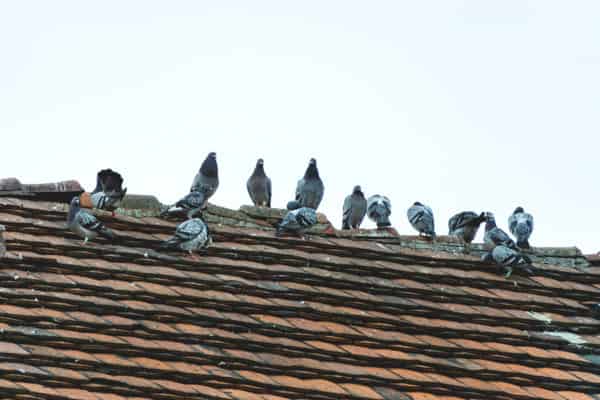
Nesting birds can cause much more damage than one may realize. But why would birds want to build their nests so close to humans? Nesting near, in, or on homes actually provides birds with protection from dangerous predators and helps protect them from extreme temperatures in the environment. Birds will build their nests anywhere that fits the criteria they are looking for. They prefer to nest at higher locations so they can survey the area around them for potential predators while keeping their nests relatively hidden. Bird nests can be found just about anywhere on or around your home. In fact, small birds will even nest in gaps in siding, behind shutters, or even on light fixtures.
So a bird built a nest on your home. Is that bird’s nest dangerous? They can be! Bird droppings contain acid that can corrode metal and concrete and even damage car paint. Debris from nests and bird feathers can clog drains and gutters leading to moisture issues. When nests are built in dryer, fan, or stove vents, they can cause clogs that restrict air flow, cause lint to buildup, and significantly increase the risk of fire. Nests that are built inside attics can cause damage to insulation.
Besides the physical damage to your home, bird nests can also cause health issues for humans. Birds carry pathogens that can be dangerous to the health of you and your family. Nests also contain bird droppings which can carry all sorts of bacteria and other pathogens like histoplasmosis. Nests can also contain parasites, ticks, mites, and other pests that can remain long after birds have vacated a nest.
There are also several federal, regional, and local laws and regulations that restrict or prohibit the relocation, removal, or destruction of bird nests. Without knowing for certain what species of bird has inhabited your home, disturbing the nest could be considered illegal and put you at risk for legal ramifications.
The best way to get rid of bird nests is to prevent them from being built in the first place. Here are some steps you can take at home to help prevent birds from nesting in, on, or near your home.
Due to the laws and regulations surrounding bird nest removal and bird protection, it is usually best to call a professional wildlife exclusion company to handle any bird nest issues you may have. These wildlife removal professionals can properly identify the species of bird nesting at your home and properly, humanely, and legally remove it or relocate it from your property.
Which Season is Worst for Bed Bugs?
Pest Control for Businesses: Everything You Need to Know About Commercial Pest Control
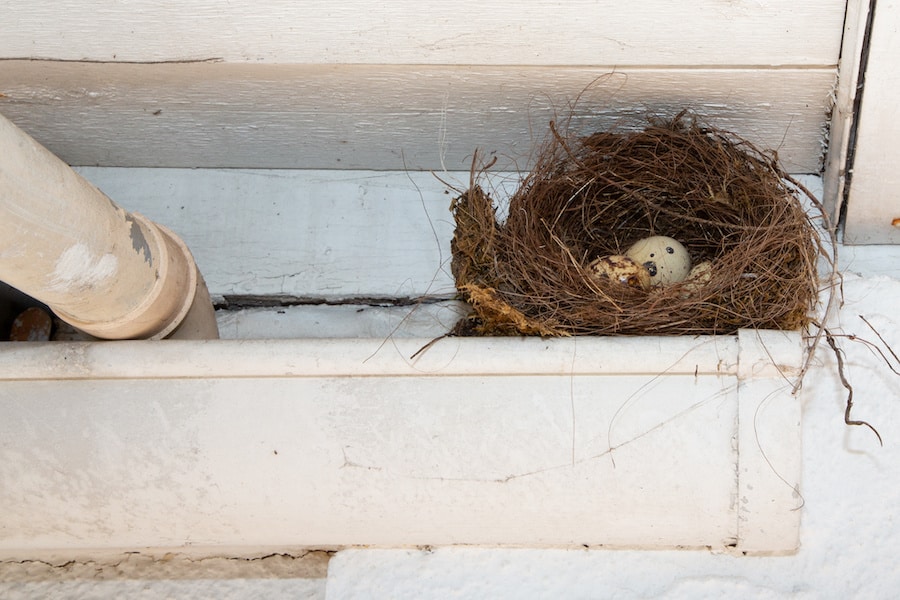
Most people may not consider birds when they think of pest control; bird removal does, however, fall into the category of wildlife exclusion. While typically benign to homeowners, birds can be detrimental to both homes and health. Birds can be quite noisy, especially if they build a nest in or on your home. They can cause damage to your roof, car, and property. Their nests can block stove, dryer, and fan vents causing fire hazards and rendering them useless. Their nests can also clog gutters and drains, leading to standing water and potential damage to your roof. Their droppings contain uric acid which can damage the paint on your car. Bird droppings also contain pathogens that are dangerous to humans like histoplasmosis. Bird nests can also contain other pests such as mites, parasites, and ticks that can stick around long after the birds have left the nest.
Birds have been known to build their nests in some very inconvenient places in and around homes. They are often found above doors, over garages, inside sheds, and other high-traffic areas. They can also nest in places that are dangerous to the birds themselves – on top of lawnmowers, heat pumps, etc.
While the decision to remove the bird nest may seem simple, there are Federal laws regarding bird nest removal that make it illegal to remove certain species of birds or their nests. Best practice is always to check with a wildlife control company before attempting to remove any bird nests from your home. If you have verified that the species of bird invading your property is not protected and removal of the nest is legal and necessary, here are some steps to take to ensure both proper and safe removal and/or relocation.
The best way to eliminate bird nests from your property is to prevent them from building in the first place. Remove any food scraps and open trash from around your home as this invites them to feed. Make sure trash is secured tightly in containers. Place any bird feeders and birdbaths away from the home and further out in the yard. Only put out enough food for a few birds and clean up any spills regularly. Consider installing gutter guards to prevent nesting in gutters and downspouts. Vents are a common nesting place for birds so install vent covers and screens. Use perch repellents if necessary; these are rows of bird spikes installed on ledges, window sills, and around the perimeter of the roof to prevent birds from alighting on perches. You can also use visual repellents such as plastic owls, hawks, snakes, and even coyotes. If you use visual repellents, make sure to move them often as the birds will get used to them being in one place. Hang reflective bird diverters from strings on your porch also.
The best time to remove a nest is when it is still in the building stage. If you notice a bird nest already built or remove one this season, keep an eye out in the same area next season and stop it before it is fully completed.
Always make sure a nest is inactive before removing or relocating it. Never attempt to remove or relocate a nest if there are birds or eggs present. It is best to wait until after nesting season for any removal or relocation. Eggs in a nest without signs of the parents don’t necessarily mean the nest has been abandoned. The parents may be out feeding or they may have left to allow the eggs a chance to cool down.
The best time to remove or relocate a nest is after nesting season is over. Most birds only nest once per year; however, some species will nest 4 to 5 times. The time varies with the species of bird. Without knowing the specific species of bird, it is difficult to determine the best time to remove or relocate the nest. A professional can help identify the species you are dealing with and help determine the best time to remove the nest.
Once you have positively identified the species of bird you have, confirmed it is legal to remove the nest, and have made sure the nest is inactive and no eggs are present, you can proceed with removing or relocating the nest. Bird nests can harbor other pests and residual bird droppings that can contain dangerous pathogens for humans. Make sure to wear long sleeves, long pants, latex gloves, and a respiratory mask to protect yourself. Carefully inspect the nest to make sure it is empty of eggs and birds. Spray the nest with an antibacterial spray. Once dry, remove the nest and dispose of it in a securely sealed container or exterior trash bag. Dispose of it in the trash away from the home. Clean the area where the nest was with a strong disinfectant. Remove and dispose of your gloves. Remove your clothing and wash them immediately in hot water. Wash your hands thoroughly.
It can be difficult to determine whether or not the bird nest in or on your home is legal to remove or the best way to remove it. If you have a bird nest that is causing problems in or on your property, contact a professional wildlife exclusion company who can positively identify the species of bird you have, properly remove or dispose of the nest, and help you identify areas where nesting could be a potential issue in the future.
Request a Free Bird Control Estimate
Venomous vs Poisonous Spiders – What’s the Difference?
How Changes To Your Environment Can Help Your Pest Control
Battling a German Roach Infestation
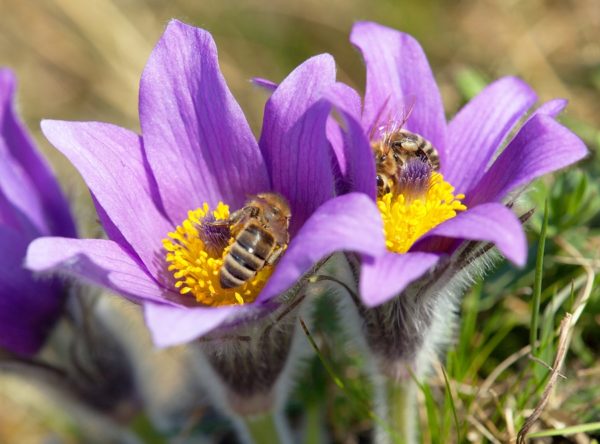
Pollination is when pollen grains are transferred from one flower to another. Pollination allows plants to produce seeds which is how they reproduce. Pollinators are animals and insects that are responsible for helping with the pollination of over 80% of the world’s flowering plants. Animal pollinators are vital in the reproduction of flowering plants and the production of most fruits and vegetables. They accomplish this by getting their food from flowers (think nectar and pollen) and collecting pollen on their bodies in the process. They then move on to another plant and leave the hitchhiking pollen behind, providing the new plants with the pollen they need to reproduce.
Some of the most common animal pollinators that come to mind are bees and butterflies. But did you know there are several other animals you might not have known who are expert pollinators? Here are a few animal pollinators along with the types of plants they pollinate:
Ants love nectar. Because they don’t fly they have to crawl into flowers to get to this nectar. Once inside the flower, pollen sticks to their bodies, allowing them to transfer it to other flowers when they move on. Tropical plants have nectar outside their flowers to attract ants to them. They then use these ants as “protectors” from other insects.
Ants pollinate flowers that:
Bats are known as one of the “night shift” pollinators. They are most common in tropical and desert climates. They are prevalent in the southwest US, Africa, Southeast Asia, and the Pacific Islands as pollinators. In fact, mangoes, bananas, and guavas depend on bats for pollination. In the US and Central America, the agave plant (which is used to make tequila) and the Saguaro cactus are also dependent on bats for pollination.
Bats pollinate flowers that:
Bees are known as the “champion” pollinators and are also the most common. There are over 4000 species of bees in the United States alone. Bees purposefully visit flowers to collect pollen and nectar which they use to feed themselves and their young. Many flowers that bees pollinate have an area of low UV reflection near their centers. Humans can’t see UV reflection so we don’t notice them. Bees, however, use them as a target to guide them to the center of the flower.
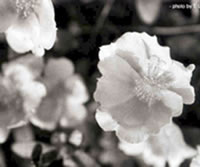
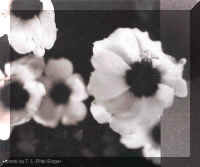
Human Perspective Bee Perspective
Photos courtesy of Apalachicola National Forest.
Bees pollinate flowers that:
Beetles were among the first insects to visit flowers. They are important pollinators for ancient species like magnolias. They are known as “mess and soil” pollinators because they eat through flower petals to get to the nectar and then defecate inside the flowers. Fossil records show that beetles were abundant as far back as 200 million years ago.
Beetles pollinate flowers that:
Birds are important pollinators of wildflowers. Hummingbirds are the most important bird pollinators in the United States. In the eastern United States there is only one species that acts as a pollinator and that is the ruby throated hummingbird. Hummingbirds have good eyesight and are extremely attracted to red flowers. They use their long bills to collect nectar and the pollen then dusts their heads and faces.
Hummingbirds pollinate flowers that:
Butterflies are very active during the day. Their body structure doesn’t allow them to pick up as much pollen as bees and other insects but they can see red where bees can’t. Butterflies produce scents that attract other butterflies of the opposite sex. This scent they produce smells like the flowers that they are attracted to.
Butterflies pollinate flowers that:
Two winged pollinators include flies, gnats, and mosquitoes. These insects aren’t as fuzzy as bees so they don’t pick up as much pollen. They are still, however, important pollinators, especially for some species of orchids.
Two-winged insects pollinate flowers that:
Moths are the other member of the pollination “night shift” along with bats. Some moths are also active as pollinators during the day. The yucca plant is one important plant that is dependent on moths for survival.
Moths pollinate flowers that:
Wasps look like bees but have much less hair. This makes them less efficient as pollinators because pollen is less likely to stick to their bodies. Wasps need pollen and nectar for energy. Fig wasps are responsible for pollinating almost 1000 species of figs.
Wasps pollinate flowers that:
There are several other uncommon pollinators. Lizards, geckos, and skinks can be pollinators. They climb inside flowers to drink the nectar and the pollen then sticks to their scales. Lemurs and possums can also pollinate. They use their snouts and tongues to get nectar from plants and then have their faces and snouts dusted with pollen.
We consider most of the animals and insects that are pollinators as nuisances and pests. As much as we don’t want them in our homes, they do play a very critical role in the survival of plants and food. It is important that while we should take steps to prevent them from invading our homes, we should be very careful with how we handle them should they make themselves at home in our area. If you suspect you have a problem with any of these pollinators, contact a professional pest control company who can give you a thorough evaluation and provide you with a treatment plan that both benefits you and protects these important species.
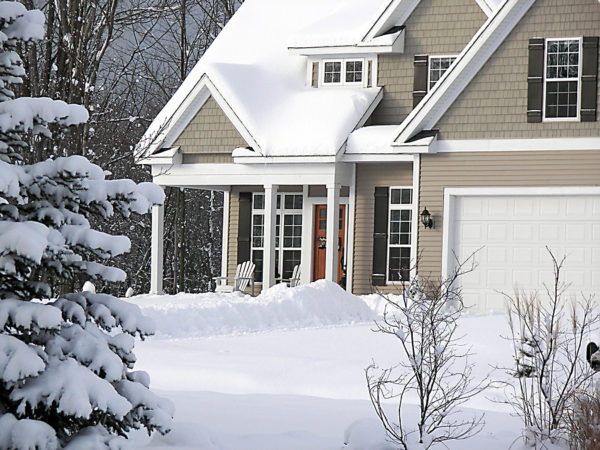
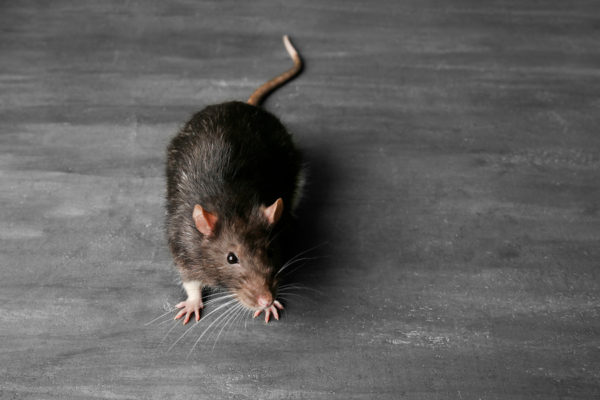
Mice and rats will seek shelter and warmth during the cold winter months. They can fit through very small openings so eliminating entry points is an effective way at preventing them from coming into your home. Eliminating food and water sources is also effective. Replace damaged roof tiles and fill any cracks in the roofing cement. Keep your attics and garages tidy and clutter free. Store your items in plastic containers versus cardboard. Install chimney caps to keep them from nesting inside your chimney. Cover your air vents with wire mesh. Store food in airtight containers and don’t leave any dirty dishes in the sink. Empty your trash regularly and make sure trash can lids are secure. Don’t leave trash bags out in the open. Clean countertops, stoves, and behind the fridge regularly and sweep and vacuum often. Seal holes around pipes using caulk or expanding foam. Keep branches and shrubbery trimmed away from the house and store firewood at least 20 feet from the home. Don’t leave pet food out overnight and seal unused pet food in airtight containers. Replace weatherstripping on windows and doors.
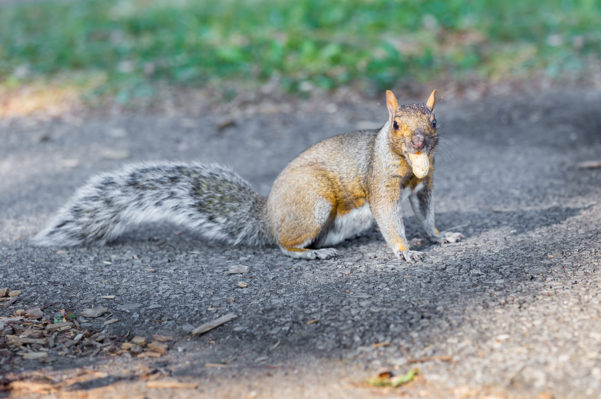
Squirrels like to frequent attics and chimneys to make their nests. Cover chimneys with chimney caps. Keep shrubbery trimmed away from the house and cut down overhanging limbs. Replace rotting wood and seal any entry points including where pipes and utilities come into the home and overhanging eaves.
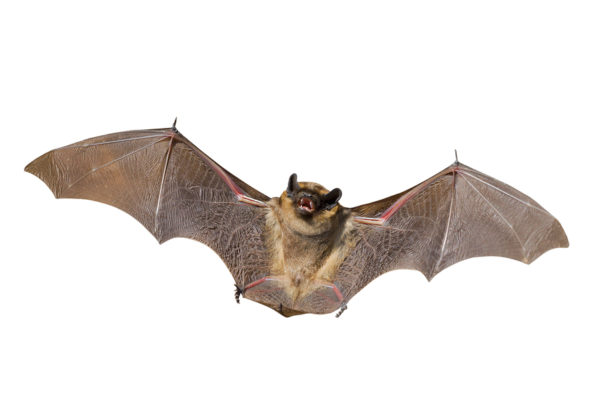
Birds and bats can and will come into your home through any opening in the exterior of the house. Chimneys should be sealed with chimney caps. Inspect the outside of your home for any openings and seal them with steel wool or foam rubber. Keep doors and windows shut as much as possible. Use screens if you must have your windows open and inspect the screens regularly for damage.
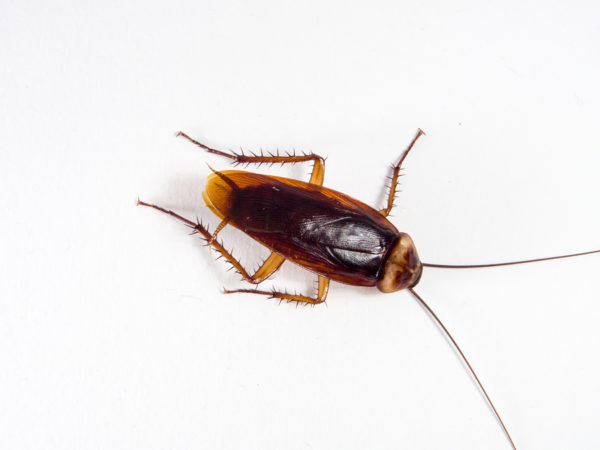
Cockroaches are attracted to moisture and excess water. They will also enter your home in search of food. Check your pipes regularly for leaks and repair quickly. Remove obstructions in pipes to prevent bursting and leaks. Seal around pipe entry points into the home. Clean your gutters. Store items in plastic containers rather than cardboard and keep them off the floor. Store food (including pet food) in airtight containers. Don’t leave dirty dishes in the sink. Wipe down countertops and sweep and vacuum regularly. Clean under sinks, in stoves, and behind appliances regularly. Empty the trash regularly.
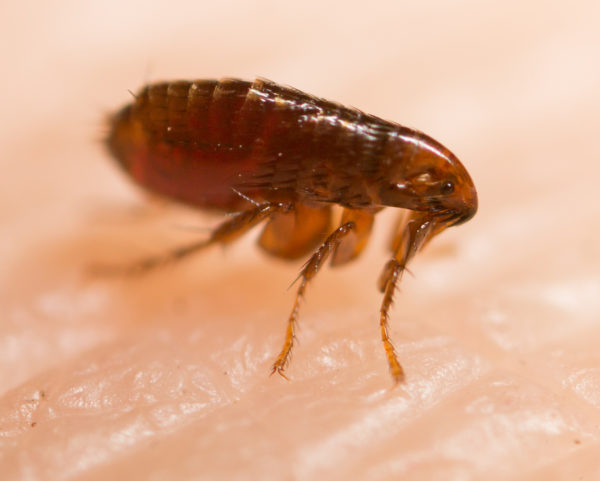
Fleas will hitch a ride into your home on your pets. The first step in preventing fleas is to treat your animals with a flea preventative, whether through medicine or shampoos or both. Check your rugs, carpets, furniture, and pet bedding for signs of fleas. Wash your pet’s bedding and other items in hot water frequently. Vacuum regularly and be sure to empty the vacuum each time you use it. Keep your grass mowed and your shrubs trimmed as this gives fleas less room to hide. Fleas can come into your yard on wild animals so don’t leave pet food out overnight to tempt them to enter your yard. Seal entry points into the house or under porches to prevent them from hiding there, as well.
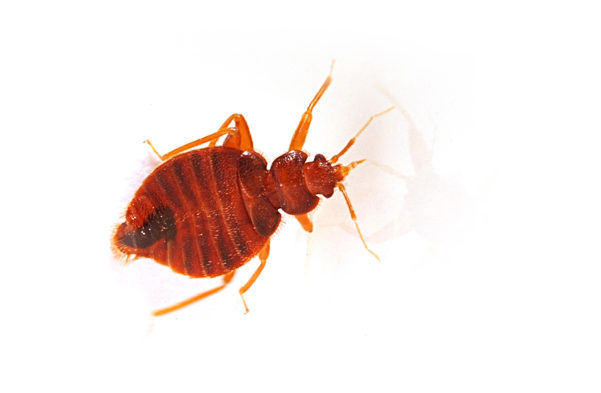
Bed bugs can come into your home in luggage (be vigilant about preventing bed bugs when traveling!) on furniture, bedding, boxes, and even clothing. Check luggage, furniture, bedding, etc. carefully before bringing it into your home. Use a mattress cover that encases the mattress and the box springs. Vacuum frequently. Wash and dry bedding on high heat regularly. Do the same with clothing after traveling.
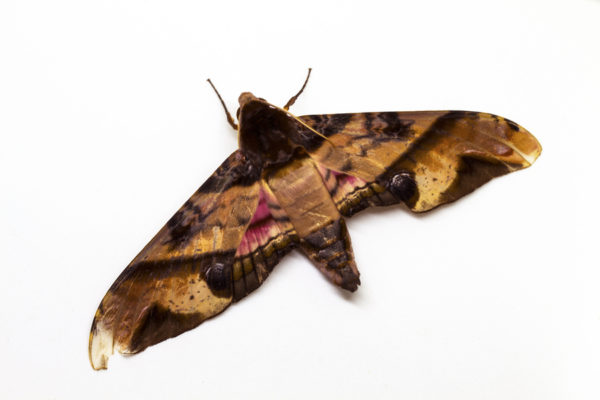
Moths are attracted to wool, fur, and upholstered furniture. Be sure to check your clothes regularly for signs of damage. Wash clothes and store them in sealed bags. Use moth balls. Vacuum and clean the insides of storage areas including wardrobes, closets, and drawers regularly.
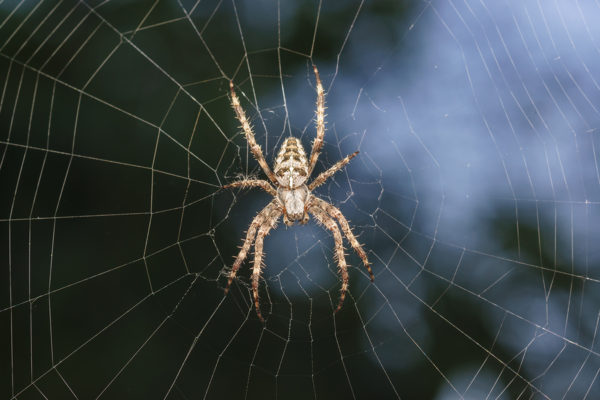
Spiders like to hide in areas of the home that are seldom used. Store seldom used items in sealed plastic containers. Seal cracks and holes in the exterior of your home to keep them from coming inside. Keep your outdoor lights off and use blinds or curtains to block the inside light. Spiders aren’t attracted to the lights but other insects are which the spiders feed on. This eliminates a food source for spiders. Keep shrubbery trimmed away from your home. Keep the grass mowed and remove debris from around your home. Sweep and vacuum regularly. Clear out as much clutter as possible. Vacuum spiders and spider webs.


Mice and rats will seek shelter and warmth during the cold winter months. They can fit through very small openings so eliminating entry points is an effective way at preventing them from coming into your home. Eliminating food and water sources is also effective. Replace damaged roof tiles and fill any cracks in the roofing cement. Keep your attics and garages tidy and clutter free. Store your items in plastic containers versus cardboard. Install chimney caps to keep them from nesting inside your chimney. Cover your air vents with wire mesh. Store food in airtight containers and don’t leave any dirty dishes in the sink. Empty your trash regularly and make sure trash can lids are secure. Don’t leave trash bags out in the open. Clean countertops, stoves, and behind the fridge regularly and sweep and vacuum often. Seal holes around pipes using caulk or expanding foam. Keep branches and shrubbery trimmed away from the house and store firewood at least 20 feet from the home. Don’t leave pet food out overnight and seal unused pet food in airtight containers. Replace weatherstripping on windows and doors.

Squirrels like to frequent attics and chimneys to make their nests. Cover chimneys with chimney caps. Keep shrubbery trimmed away from the house and cut down overhanging limbs. Replace rotting wood and seal any entry points including where pipes and utilities come into the home and overhanging eaves.

Birds and bats can and will come into your home through any opening in the exterior of the house. Chimneys should be sealed with chimney caps. Inspect the outside of your home for any openings and seal them with steel wool or foam rubber. Keep doors and windows shut as much as possible. Use screens if you must have your windows open and inspect the screens regularly for damage.

Cockroaches are attracted to moisture and excess water. They will also enter your home in search of food. Check your pipes regularly for leaks and repair quickly. Remove obstructions in pipes to prevent bursting and leaks. Seal around pipe entry points into the home. Clean your gutters. Store items in plastic containers rather than cardboard and keep them off the floor. Store food (including pet food) in airtight containers. Don’t leave dirty dishes in the sink. Wipe down countertops and sweep and vacuum regularly. Clean under sinks, in stoves, and behind appliances regularly. Empty the trash regularly.

Fleas will hitch a ride into your home on your pets. The first step in preventing fleas is to treat your animals with a flea preventative, whether through medicine or shampoos or both. Check your rugs, carpets, furniture, and pet bedding for signs of fleas. Wash your pet’s bedding and other items in hot water frequently. Vacuum regularly and be sure to empty the vacuum each time you use it. Keep your grass mowed and your shrubs trimmed as this gives fleas less room to hide. Fleas can come into your yard on wild animals so don’t leave pet food out overnight to tempt them to enter your yard. Seal entry points into the house or under porches to prevent them from hiding there, as well.

Bed bugs can come into your home in luggage (be vigilant about preventing bed bugs when traveling!) on furniture, bedding, boxes, and even clothing. Check luggage, furniture, bedding, etc. carefully before bringing it into your home. Use a mattress cover that encases the mattress and the box springs. Vacuum frequently. Wash and dry bedding on high heat regularly. Do the same with clothing after traveling.

Moths are attracted to wool, fur, and upholstered furniture. Be sure to check your clothes regularly for signs of damage. Wash clothes and store them in sealed bags. Use moth balls. Vacuum and clean the insides of storage areas including wardrobes, closets, and drawers regularly.

Spiders like to hide in areas of the home that are seldom used. Store seldom used items in sealed plastic containers. Seal cracks and holes in the exterior of your home to keep them from coming inside. Keep your outdoor lights off and use blinds or curtains to block the inside light. Spiders aren’t attracted to the lights but other insects are which the spiders feed on. This eliminates a food source for spiders. Keep shrubbery trimmed away from your home. Keep the grass mowed and remove debris from around your home. Sweep and vacuum regularly. Clear out as much clutter as possible. Vacuum spiders and spider webs.